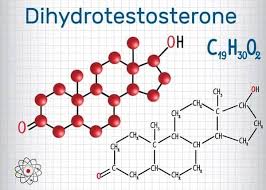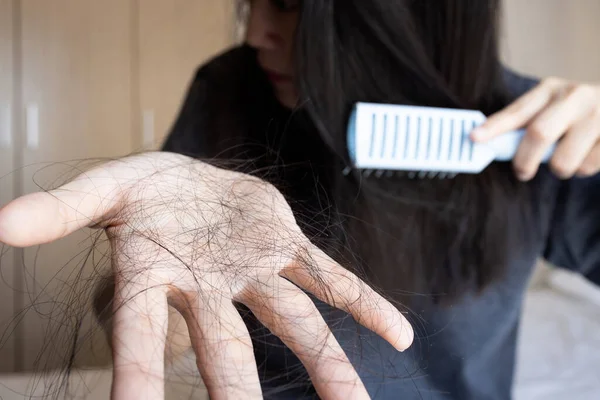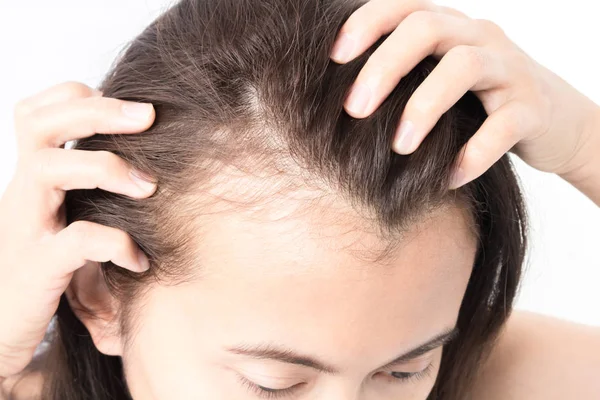How to reduce DHT in females naturally is a critical concern for many women experiencing hair loss and other hormonal-related issues. Dihydrotestosterone (DHT) is an androgen hormone that is linked to hair loss, particularly in those susceptible to androgenetic alopecia. Fortunately, there are several natural methods to mitigate the effects of DHT and promote healthier hair growth. This article consolidates reliable strategies from various authoritative sources to offer a comprehensive guide on managing DHT levels naturally.
Table of Contents
ToggleDietary Approaches to Reduce DHT

Foods Rich in Lycopene:
- Tomatoes: Cooking enhances lycopene absorption, making cooked tomatoes a powerful choice for reducing DHT in females naturally.
- Carrots: Snack on them raw or blend into smoothies.
- Watermelon: A refreshing source, especially in the summer.
- Guava: Tropical and rich in nutrients beyond lycopene.
High Zinc Foods:
- Spinach: Add to salads or smoothies.
- Kale: Perfect for chips or as a salad base.
- Pumpkin Seeds: Sprinkle on yogurt or salads.
Additional DHT Blocking Foods:
- Green Tea: Contains EGCG, which may protect hair follicles.
- Onions: Include in dishes to benefit from its quercetin.
- Turmeric: Use in curries or as a supplement for its curcumin content, which might inhibit DHT production.
- Pumpkin Seed Oil: Can be used as a salad dressing or taken as a supplement.
Each of these foods offers a natural way to combat the effects of DHT, contributing to hair health and overall hormone balance.
Lifestyle Modifications to Lower DHT Levels

Stress Reduction Techniques:
- Meditation: Daily sessions can significantly lower stress levels.
- Yoga: Combines physical poses with breath control to reduce stress.
- Adequate Sleep: Aim for seven to nine hours of sound sleep every night.
Physical Activity:
- Regular Exercise: Activities like jogging, swimming, or cycling help balance hormones.
- Scalp Exercises: Gentle massages increase blood flow and may help in reducing scalp DHT concentrations.
Avoiding Excesses:
- Limit Alcohol Consumption: Reduces the risk of hormonal imbalances.
- Quit Smoking: Smoking can exacerbate hormonal disturbances and DHT production.
These lifestyle changes not only contribute to lowering DHT levels but also promote overall health and well-being, an essential factor on how to reduce DHT in females naturally.
Use of DHT Blockers and Medications
Topical and Oral DHT Blockers:
- Finasteride: Finasteride is a prescription drug that prevents testosterone from being converted to DHT.
- Natural Remedies:
- Saw Palmetto: Often used in supplements as a natural DHT inhibitor.
- Green Tea Extract: Can be applied topically or consumed in tea form for its DHT blocking properties.
DHT Blocking Shampoos:
- Key Ingredients:
- Rosemary Extract: Promotes better circulation and hair development.
- Tea Tree Oil: Helps in cleansing and unclogging hair follicles.
- Aloe Vera: Moisturizes the scalp and reduces inflammation.
- Application: Use regularly as part of your hair care routine to maximize the benefits of DHT reduction.
These products and medications provide effective tools for addressing how to reduce DHT in females naturally by targeting the hormonal basis of hair loss directly at the source—the scalp.
Supplements and Herbal Remedies

Vitamin and Mineral Supplements:
- Vitamin B3 (Niacin): Niacin, or vitamin B3, improves blood flow to the scalp and encourages the growth of hair.
- Vitamin A: Supports healthy cell growth, including hair follicles.
- Biotin: The B vitamin biotin is necessary for strong, healthy skin, hair, and nails.
- Vitamin C: Aids in iron absorption and collagen production, both vital for hair health.
- Vitamin D: Encourages the creation of new hair follicles.
- Zinc: Important for tissue growth and repair, supports oil glands around hair follicles.
Herbal DHT Blockers:
- Stinging Nettle: Taken as a tea or supplement, it may help in blocking DHT.
- Pygeum Bark: Known for its properties to reduce DHT levels and promote scalp health.
- Saw Palmetto: Often included in hair health supplements as a natural DHT blocker.
- Green Tea: Rich in antioxidants, which can inhibit DHT when applied topically or ingested.
Incorporating these vitamins and herbal supplements into your daily routine can provide a natural boost in addressing how to reduce DHT in females naturally, improving hair health and potentially reducing hair loss.
How to Reduce DHT in Females Naturally

Combining the various strategies discussed above into a comprehensive approach can effectively manage and lower DHT levels. Here’s how to integrate these into a routine:
Integrative Approach:
- Diet: Incorporate a diet rich in lycopene, zinc, and antioxidants. Regular consumption of green tea, pumpkin seeds, and foods rich in vitamins can create a hormone-balancing effect.
- Lifestyle: Maintain regular physical activity and stress management practices. In particular, yoga and meditation can be helpful.
- Natural Supplements: Use supplements like vitamin B complex, zinc, and herbal extracts known to support hair health and reduce DHT levels.
- Regular Use of DHT Blockers: Include topical solutions such as DHT blocker shampoos and serums in your daily hair care routine.
- Medical Consultation: Always consult with a healthcare provider to tailor the approach based on individual health needs and conditions.
This holistic method not only helps in reducing DHT but also enhances overall health, a crucial aspect of how to reduce DHT in females naturally. Each step contributes to a healthier scalp environment, promoting stronger and healthier hair growth.
Read Also:
